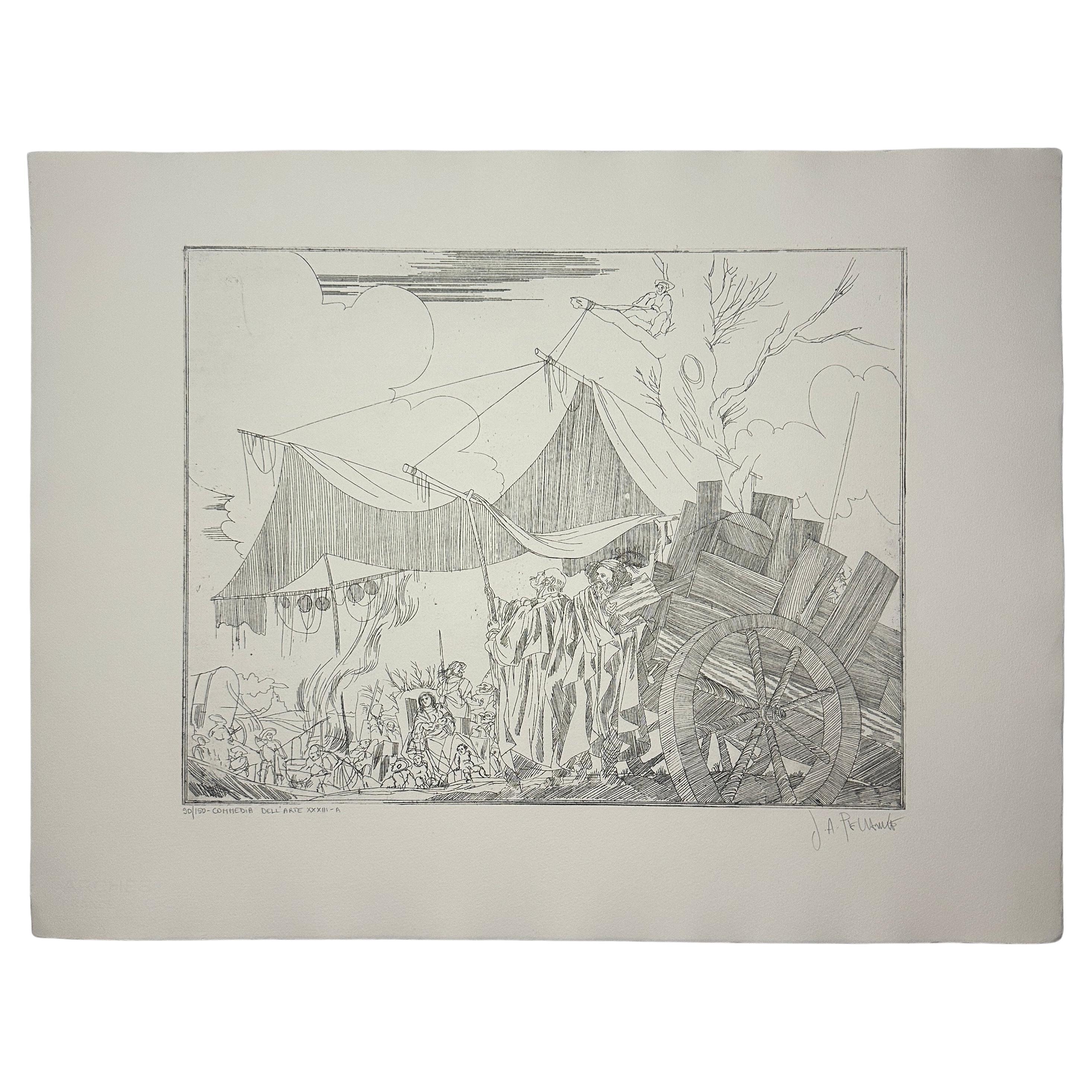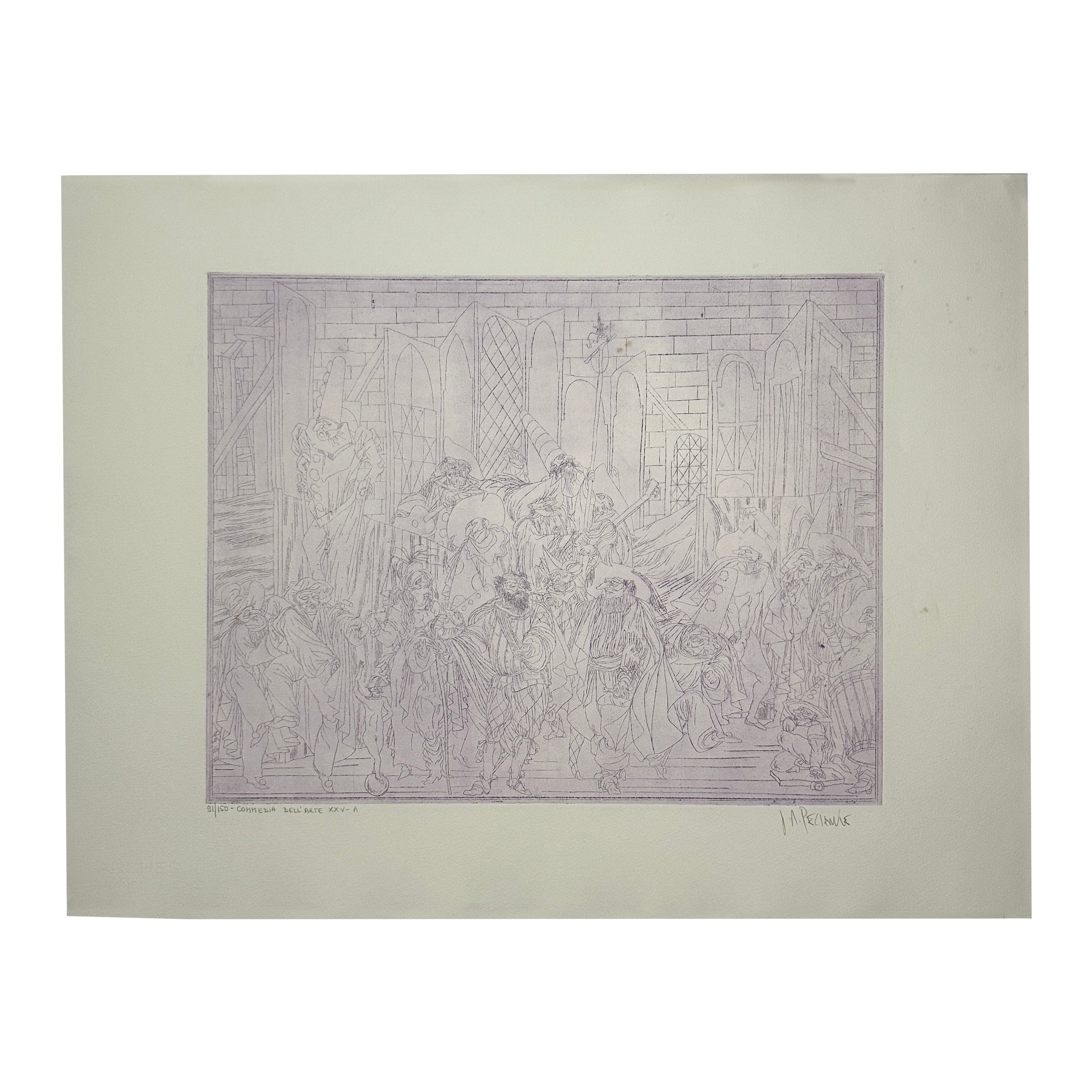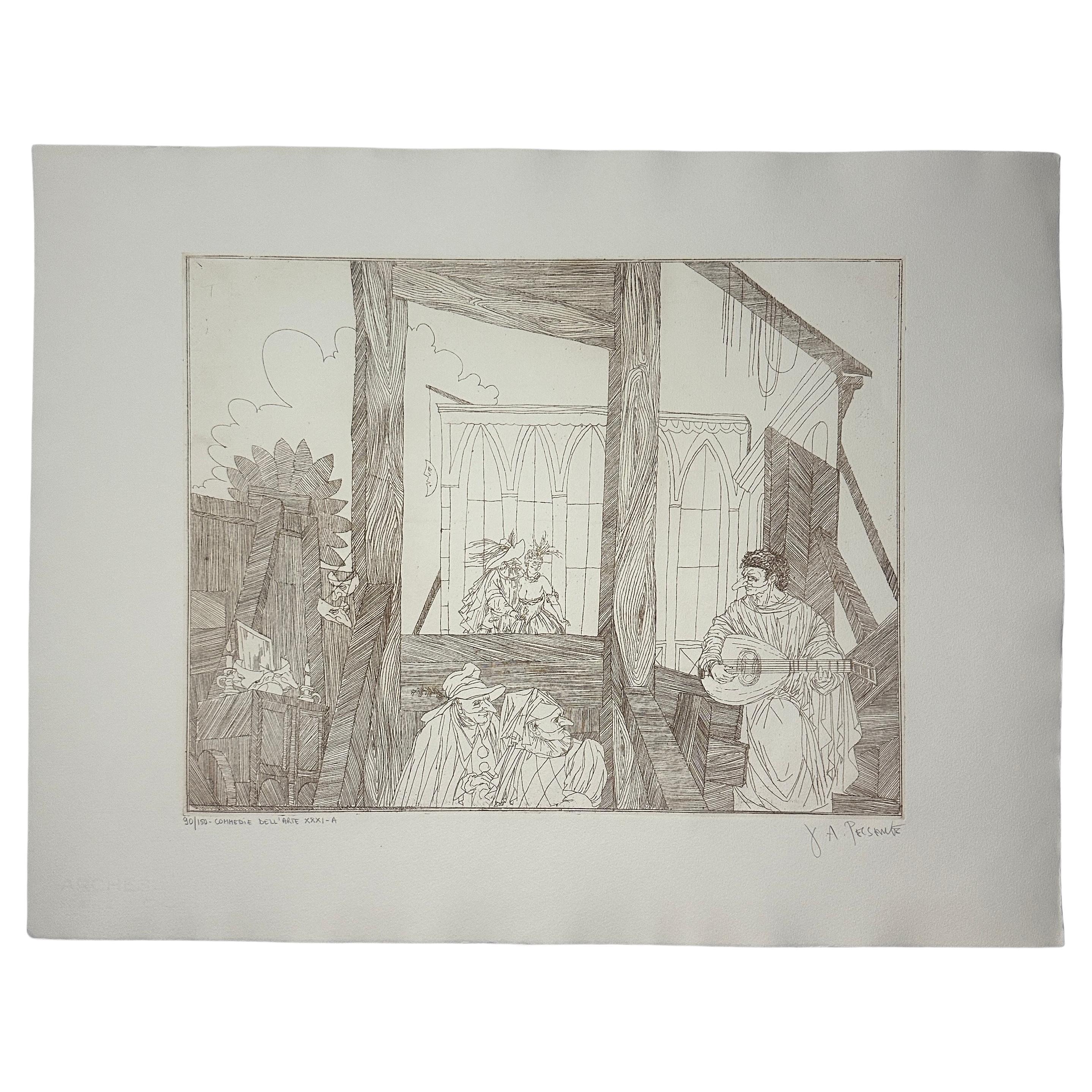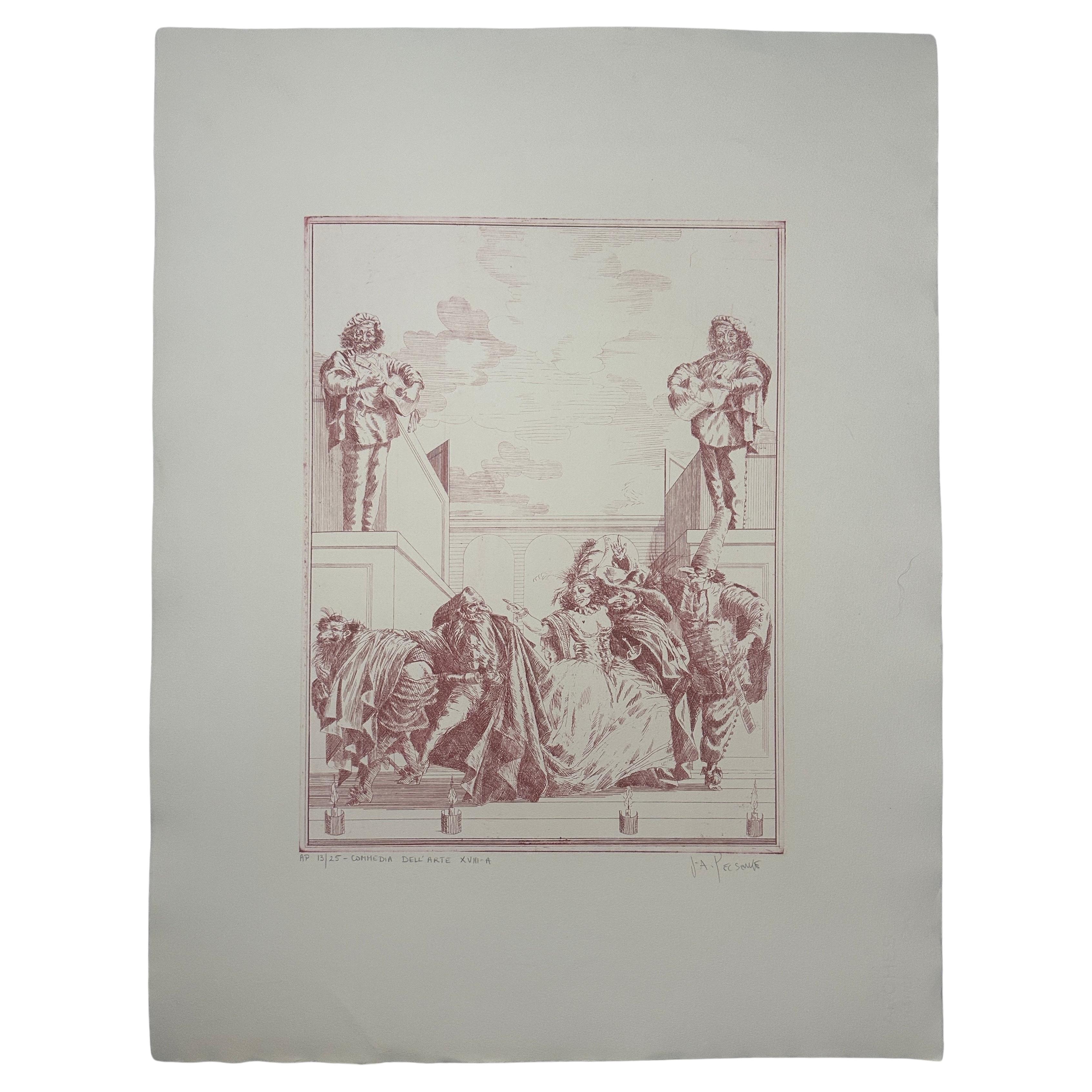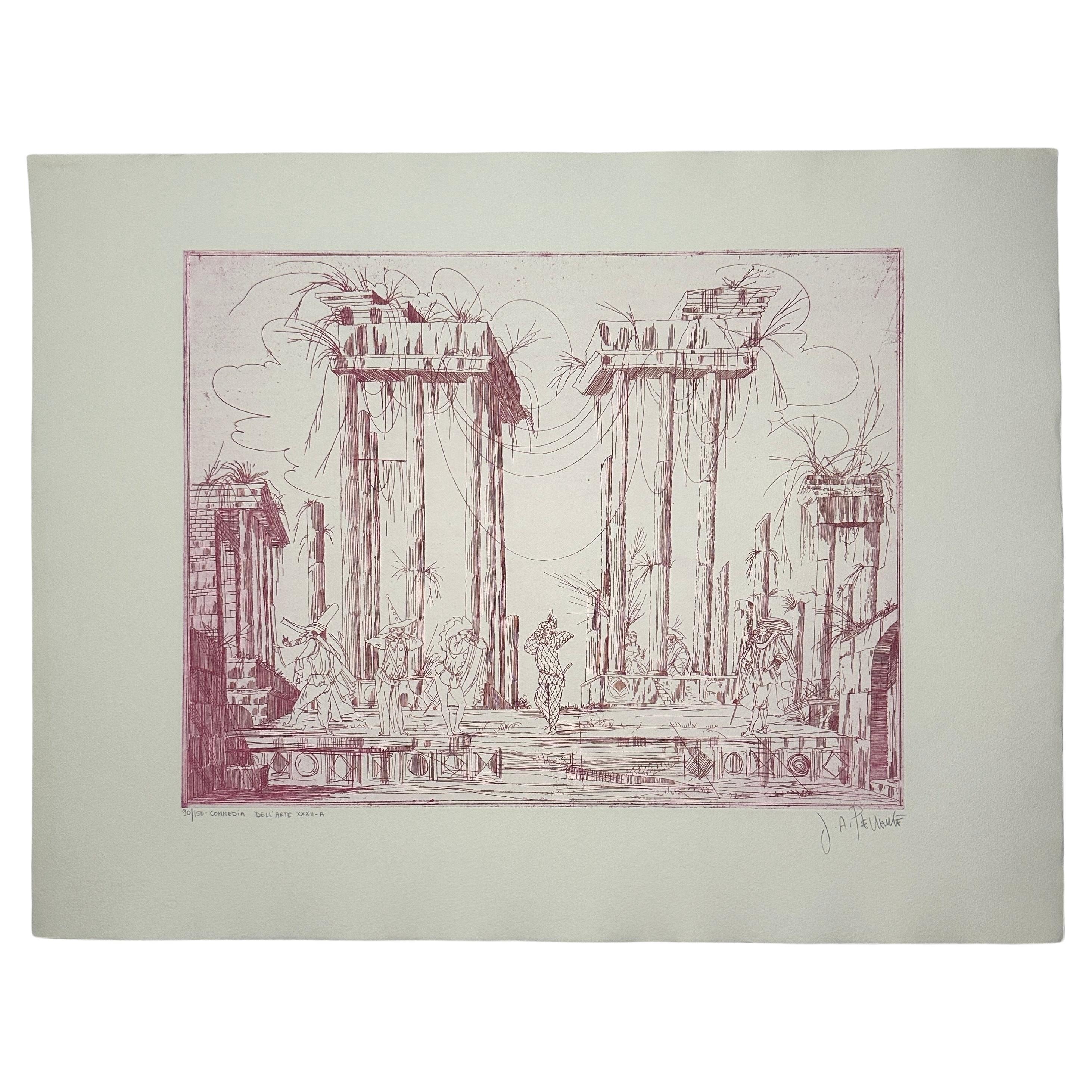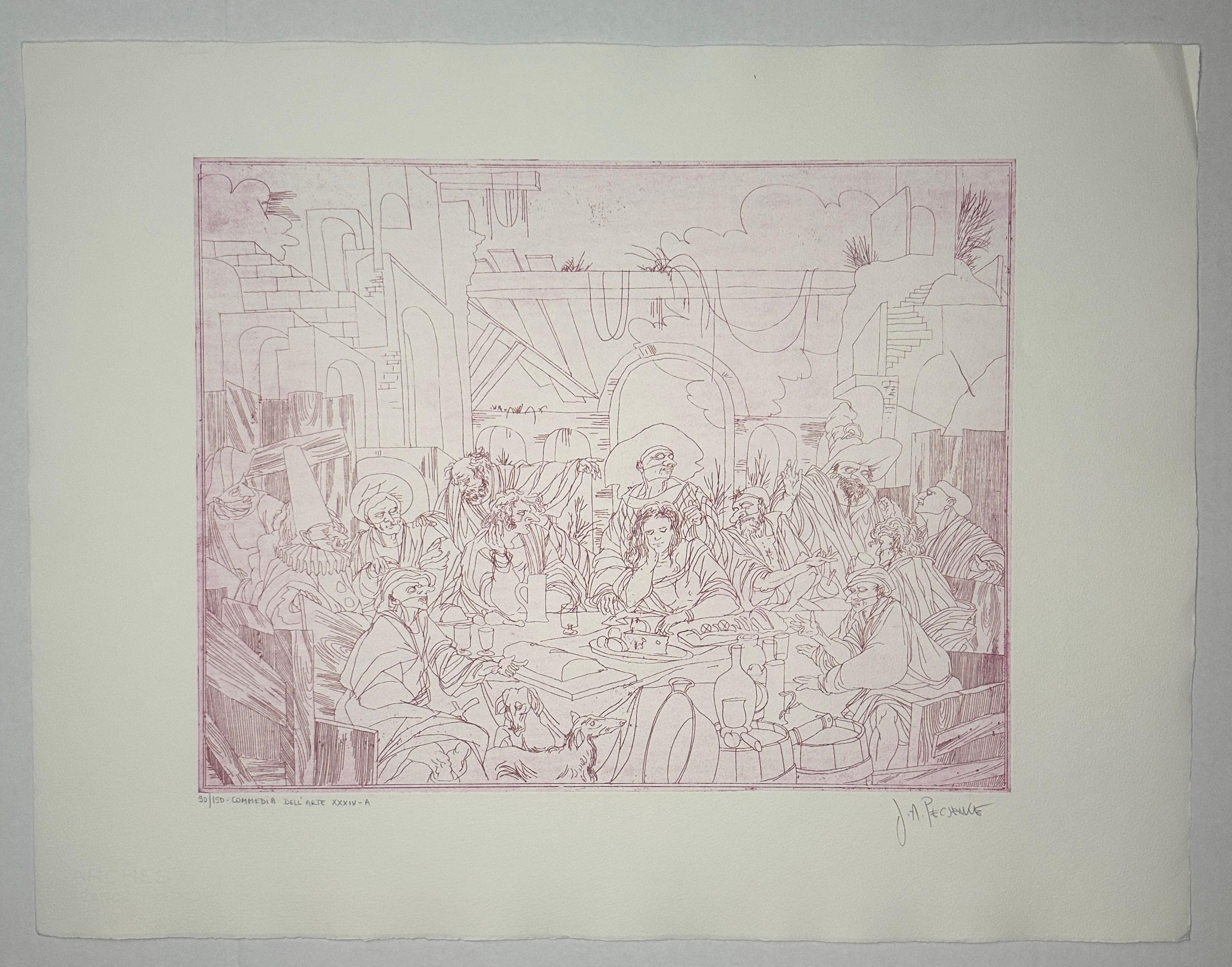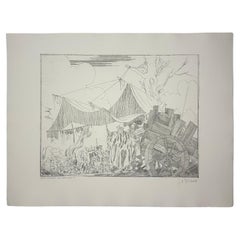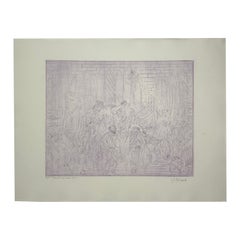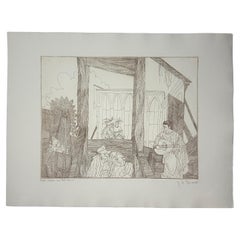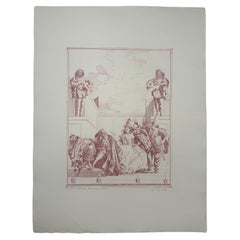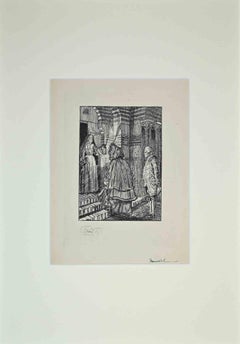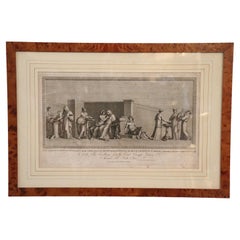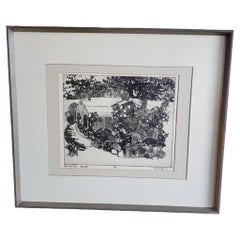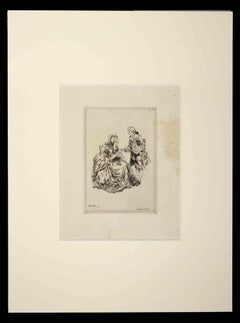Items Similar to Joseph A. Pecsenke - Commedia Dell'Arte XXIV-A Etching
Video Loading
Want more images or videos?
Request additional images or videos from the seller
1 of 7
Joseph A. Pecsenke - Commedia Dell'Arte XXIV-A Etching
$144
$18020% Off
£108.81
£136.0220% Off
€125.94
€157.4320% Off
CA$202.02
CA$252.5320% Off
A$224.71
A$280.8920% Off
CHF 117.88
CHF 147.3520% Off
MX$2,741.97
MX$3,427.4620% Off
NOK 1,479.57
NOK 1,849.4720% Off
SEK 1,394.32
SEK 1,742.9020% Off
DKK 940.10
DKK 1,175.1220% Off
About the Item
Joseph A. Pecsenke - Commedia Dell'Arte XXIV-A
Etching in colors
This work is signed, numbered and titled to lower edge '91/150 Commedia Dell'Arte XXIV-A J.A. Pecsenke
Joseph A. Pecsenke (1942 – 1989). Pecsenke was a Hungarian American actor, director, musician, graphic designer, and printmaker.
After graduating from the Budapest Academy of Fine Arts, Pecsenke worked as an illustrator in Hungary before moving to New York in 1971. Eventually he moved to Sweden, where he stayed for the rest of his life.
Pecsenke was profoundly involved in the theater world. In addition to his work as an actor and set designer, Pecsenke directed opera performances all over the world. It was his work in the theater that inspired his series Commedia dell’Arte and Opera Suite, both of which are included in this exhibition.
The Commedia dell’Arte, or “comedy of professional artists,” is a form of theater performance that emerged in Italy in the 15th century and was popular across Europe through the 18th century. The Commedia contains set plotlines and recognizable stock characters, and performing the Commedia is regarded as an intricate art form. His Opera Suite, comprised of a series of lithographs illustrating a variety of operas, includes scenes from Otello, Madame Butterfly, Faust, and La Boheme. Pecsenke’s colorful renderings portray actors mid-scene, often clad in ornate costumes and masks, in front of elaborate stage sets, capturing a moment of a dramatic performance.
Pecsenke’s artwork has been exhibited all over the world, and is currently in the collections of the Metropolitan Opera, the Joffrey Ballet, the Folger Shakespeare Library, the New York Philharmonic, and Yale University. Into the Limelight will be on display in The Museum’s Works on Paper Gallery from May 27 to September 4, 2023.
' Into the Limelight - 2023 - Reading Public Museum '
- Dimensions:Height: 19.625 in (49.85 cm)Width: 25.625 in (65.09 cm)Depth: 0.125 in (3.18 mm)
- Materials and Techniques:
- Place of Origin:
- Period:
- Date of Manufacture:c. 20th C
- Condition:Work is in good condition with minor crease to upper right corner, area of occasional points of foxing to upper right and faint discoloration along left edge. Otherwise, work presents well.
- Seller Location:Alpha, NJ
- Reference Number:Seller: d-.0041stDibs: LU6266243319162
Mayfly Studio
Design Studio - Luxury Furniture, Design and Collectibles
About the Seller
No Reviews Yet
Vetted Professional Seller
Every seller passes strict standards for authenticity and reliability
Established in 2021
1stDibs seller since 2022
9 sales on 1stDibs
- ShippingRetrieving quote...Shipping from: Alpha, NJ
- Return Policy
Authenticity Guarantee
In the unlikely event there’s an issue with an item’s authenticity, contact us within 1 year for a full refund. DetailsMoney-Back Guarantee
If your item is not as described, is damaged in transit, or does not arrive, contact us within 7 days for a full refund. Details24-Hour Cancellation
You have a 24-hour grace period in which to reconsider your purchase, with no questions asked.Vetted Professional Sellers
Our world-class sellers must adhere to strict standards for service and quality, maintaining the integrity of our listings.Price-Match Guarantee
If you find that a seller listed the same item for a lower price elsewhere, we’ll match it.Trusted Global Delivery
Our best-in-class carrier network provides specialized shipping options worldwide, including custom delivery.More From This Seller
View AllJoseph A. Pecsenke - Commedia Dell'Arte XXXIII-A Etching
Located in Alpha, NJ
Joseph A. Pecsenke - Commedia Dell'Arte XXXIII-A
Etching in colors
This work is signed, numbered and titled to lower edge '90/150 Commedia Dell'Arte XXXIII-A J.A. Pecsenke
Joseph A...
Category
Late 20th Century Hungarian Prints
Materials
Paper
$144 Sale Price
20% Off
Joseph A. Pecsenke - Commedia Dell'Arte XXV-A Etching
Located in Alpha, NJ
Joseph A. Pecsenke - Commedia Dell'Arte XXV-A
Etching in colors
This work is signed, numbered and titled to lower edge '90/150 Commedia Dell'Arte XXV-A J.A. Pecsenke
Joseph A. Pecs...
Category
Late 20th Century Hungarian Prints
Materials
Paper
$128 Sale Price
20% Off
Joseph A. Pecsenke - Commedia Dell'Arte XXXI-A Etching
Located in Alpha, NJ
Joseph A. Pecsenke - Commedia Dell'Arte XXXI-A
Etching in colors
This work is signed, numbered and titled to lower edge '90/150 Commedia Dell'Arte XXXI-A J.A. Pecsenke
Joseph A. Pe...
Category
Late 20th Century Hungarian Prints
Materials
Paper
$144 Sale Price
20% Off
Joseph A. Pecsenke - Commedia Dell'Arte XVIII-A - Etching
Located in Alpha, NJ
Joseph A. Pecsenke (1942 – 1989). Pecsenke was a Hungarian American actor, director, musician, graphic designer, and printmaker.
After graduating from the Budapest Academy of Fine A...
Category
Late 20th Century Hungarian Prints
Materials
Paper
$144 Sale Price
20% Off
Joseph A. Pecsenke - Commedia Dell'Arte XXXII-A Etching
Located in Alpha, NJ
Joseph A. Pecsenke - Commedia Dell'Arte XXXII-A
Etching in colors
This work is signed, numbered and titled to lower edge '90/150 Commedia Dell'Arte XXXII-A J.A. Pecsenke
Joseph A. ...
Category
Late 20th Century Hungarian Prints
Materials
Paper
$144 Sale Price
20% Off
Joseph A. Pecsenke - Commedia Dell'Arte XXXIV-A - Etching
Located in Alpha, NJ
Joseph A. Pecsenke - Commedia Dell'Arte XXXIV-A
Etching in colors
This work is signed, numbered and titled to lower edge '90/150 Commedia Dell'Arte XXXIV-A J.A. Pecsenke
Joseph A. ...
Category
Late 20th Century Prints
Materials
Paper
$144 Sale Price
20% Off
You May Also Like
The Life of Casanova 2 - Etching by G. Jeanniot - Early 20th Century
By Pierre Georges Jeanniot
Located in Roma, IT
From The Life of Casanova 2 is an original artwork realized by G.Jeanniot (Geneva,1848 - Paris,1934).
Etching.
Signed in pen by the artist.
Good condition.
Passpartout 39x34.
Pi...
Category
Early 20th Century Modern Figurative Prints
Materials
Etching
18th Century Antique Etching Print by Alessandro Mochetti
Located in Casale Monferrato, IT
Beautiful 18th century antique etching print with in walnut briar frame. Was etching by Alessandro Mochetti (1760 - 1812) was an Italian engrave...
Category
Antique 1780s Italian Prints
Materials
Paper
$1,713 Sale Price
20% Off
1967 Etching Titled, Dated, Signed "Nocturnal Abode" #3/7 by Artist H Valoff
Located in Monrovia, CA
Vintage 1967 original etching named signed and numbered "Nocturnal Abode" #3/7 H. Valoff 1967.
1967 Original etching by Artist H. Valoff Is Framed And Ready To Hang.
Nocturnal Ab...
Category
Mid-20th Century American Drawings
Materials
Paper
Scene from The Life of Casanova - Etching by G. Jeanniot - Early 20th Century
By Pierre Georges Jeanniot
Located in Roma, IT
Scene from The Life of Casanova is an original Etching realized by Pierre Georges Jeanniot in the early 20th Century.
Good Conditions.
The artwork is depicted through soft strokes ...
Category
Early 20th Century Modern Figurative Prints
Materials
Etching
The Life of Casanova 3 - Etching by G. Jeanniot - Early 20th Century
By Pierre Georges Jeanniot
Located in Roma, IT
From The Life of Casanova 3 is an original artwork realized by G.Jeanniot (Geneva,1848 - Paris,1934).
Etching.
Signed in pen by the artist.
Good condition.
Passpartout 39x34.
Pi...
Category
Early 20th Century Modern Figurative Prints
Materials
Etching
Military - Original Etching by Anselmo Bucci - 1919
By Anselmo Bucci
Located in Roma, IT
"Military" is a beautiful print in the etching technique, realized by Anselmo Bucci (1887-1955).
In very good conditions.
Anselmo Bucci (1887-1955): Italian painter, engraver, and ...
Category
20th Century Modern Figurative Prints
Materials
Etching
More Ways To Browse
Paddle Board
Painted 18th Century Grandfather Clocks
Painted Curio Cabinet
Pair Bow Front Chests
Pair Curio Cabinets
Palm Tree Planter
Pantry Box
Pasta Table
Paul Dupre Lafon Table
Penguin Figure
Peter Hvidt And Orla Molgaard Nielsen Cabinet
Pheasant Decor
Plaster Figurines
Plaster Rock Table
Pressed Tin
Qing Dynasty Buddha
R J Horner Oak
Raija Uosikkinen
